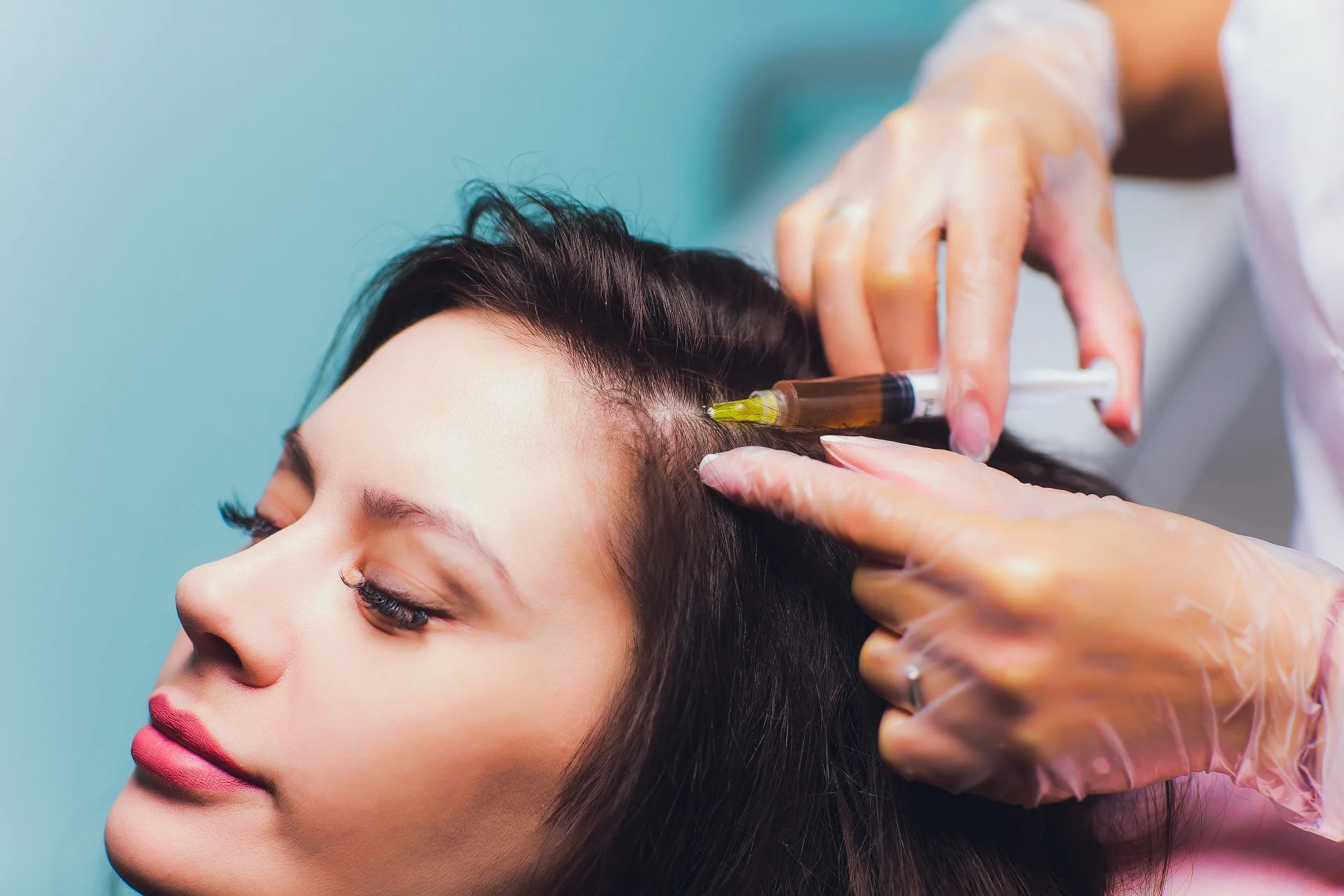PRP Therapy for Hair Loss in New York, NY

PRP Therapy for Hair Loss in New York, NY
PRP therapy for hair loss is an advanced treatment that uses platelet-rich plasma derived from your blood to boost hair growth and increase hair thickness. The process begins with a blood draw, then placed in a centrifuge to separate the plasma from other components. This concentrated plasma is rich in growth factors essential for healing and regeneration. By injecting this platelet-rich plasma into the scalp, the therapy aims to revive dormant hair follicles, promoting new hair growth and potentially reducing hair loss.
PRP therapy for hair loss is ideal for patients suffering from various types of hair loss, including androgenetic alopecia, commonly referred to as male or female pattern baldness. It can also address thinning hair and receding hairlines. Most patients expect to see results within a few months, with continued improvement. The effects typically last several months, and maintenance treatments may be suggested to sustain the results. If you are looking for an effective solution for hair loss, consider scheduling an appointment for PRP therapy at Park Plaza Dermatology in New York, NY. Our team is ready to assist you in your journey toward healthier hair.
Common Treatment Areas for PRP Therapy for Hair Loss include:
Scalp
PRP therapy for hair loss is primarily used on the scalp to promote hair follicles. The growth factors in the platelet-rich plasma promote blood circulation and encourage new hair growth in thinning or balding areas.
Hairline
This treatment can help restore a receding hairline by injecting PRP into the frontal area of the scalp. It stimulates hair follicles and promotes regrowth in areas where hair has started to thin.
Crown of the Head
PRP therapy targets the crown, a common area for thinning hair in both men and women. The injections enhance follicle activity and support the growth of new hair.
Temporal Regions
These areas, located near the sides of the forehead, often experience hair loss. PRP therapy can be effective in stimulating growth in this region to achieve a fuller appearance.
Patchy Areas
For individuals with alopecia areata or patchy hair loss, PRP therapy can promote hair growth in affected spots. The growth factors stimulate dormant follicles and encourage hair to regrow in those areas.
Beard
PRP therapy can also be used for facial hair restoration, including the beard area. It enhances follicle function and promotes hair growth for a thicker beard appearance.
Eyebrows
This treatment can help individuals looking to improve eyebrow fullness. PRP injections can stimulate hair growth in sparse areas, leading to a more defined eyebrow shape.
Benefits of PRP Therapy for Hair Loss:
- Uses your body’s natural resources for safe treatment
- Non-surgical procedure with minimal downtime
- Stimulates natural hair growth
- Can improve hair thickness and texture
- Suitable for various types of hair loss
- Reduces hair shedding and thinning
- Boosts confidence with improved hair appearance
- Quick procedure with lasting results
- Helps restore hair in areas affected by alopecia
- Customized treatment plans to fit individual needs
Frequently Asked Questions
PRP therapy for hair loss is a treatment that uses platelet-rich plasma obtained from your blood to promote hair growth. The growth factors in the plasma stimulate hair follicles and enhance the overall health of the hair.
During the procedure, blood is drawn and centrifuged to concentrate the platelets. The platelet-rich plasma is then administered into the scalp, promoting hair follicles and encouraging new hair growth.
A typical PRP therapy session lasts about 30 to 60 minutes, based on the treatment area and the individual’s specific needs.
Most patients benefit from three to four sessions spaced about four to six weeks apart. This allows for optimal stimulation of the hair follicles.
Since PRP therapy uses your blood, side effects are minimal. It is common for patients to experience mild swelling or redness at the injection area, but these symptoms resolve quickly.
PRP therapy is usually safe for most people. However, individuals with certain medical conditions, such as blood disorders or active infections, may need to consult their healthcare provider to assess if it is appropriate.
